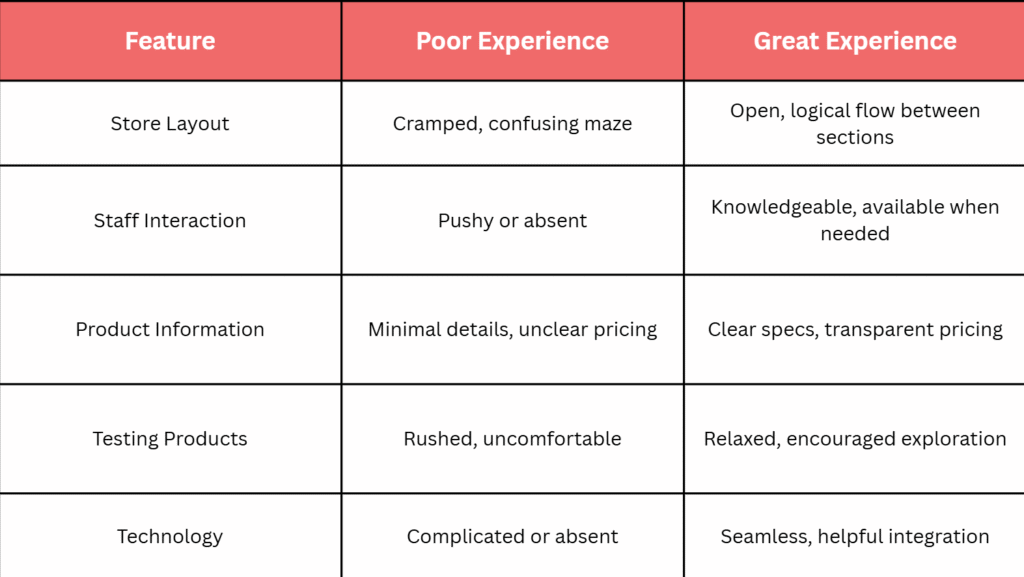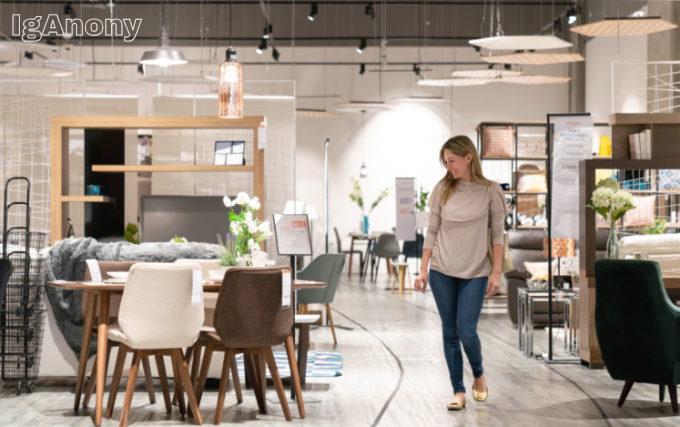A great furniture shopping experience should make you feel confident, comfortable, and excited about your choice. From the moment you walk into the store or browse online, everything should be clear, helpful, and focused on your needs.
When it comes to couches, you’re not just buying a piece of furniture, you’re choosing the spot where you’ll unwind after a long day, chat with loved ones, or simply enjoy a moment of peace. A great experience helps you find a couch that supports rest, encourages conversation, and invites togetherness. It means getting answers without pressure, seeing honest reviews, trying different styles, and knowing what to expect with delivery and quality.
Whether you’re buying your first couch or upgrading your current space, we’ll walk you through what to look for, what to avoid, and how to choose a piece that fits both your style and your everyday life. Because the right couch should do more than look good, it should feel like home.
Creating the Right Store Atmosphere
The physical environment shapes your entire shopping experience. Many furniture stores create welcoming showrooms that feel like real living spaces, helping you visualize how each piece fits into your home. This thoughtful layout makes it easier to find what you love and feel confident in your choices.
For instance, Sarasota, a vibrant coastal city in Florida, is known for its rich arts scene, upscale lifestyle, and growing residential communities. It makes an ideal spot for homeowners seeking quality home furnishings. A great furniture shopping experience combines attentive customer service, a wide selection of styles, and an inspiring showroom that sparks creativity. That’s exactly what you’ll find at some of the top-rated furniture stores in sarasota, where curated collections and expert guidance help shoppers transform their living spaces with ease and confidence.
Lighting That Showcases Products
Proper lighting can make or break how furniture appears to potential buyers. Natural light works best, but when that’s not possible, warm LED lighting creates an inviting atmosphere. Harsh fluorescent lighting makes everything look cheap and uninviting. Smart retailers use layered lighting – ambient, task, and accent lighting – to create depth and highlight key pieces.
The goal is to create an emotional connection between you and the furniture. When lighting is done right, you can easily imagine how pieces might look in your own home.
Thoughtful Layout and Flow
A well-designed store layout guides you naturally through different sections without feeling rushed or lost. The best furniture stores create distinct areas for different room types while maintaining a logical flow. You shouldn’t feel like you’re wandering through a maze.
Room vignettes help you visualize how pieces work together. Instead of seeing individual items scattered around, you see complete living spaces that inspire your decorating ideas. This approach reduces decision fatigue and helps you make more confident choices.
Comfortable Testing Areas
Since furniture is something you’ll live with daily, being able to test it properly is crucial. Great stores provide comfortable areas where you can sit on sofas, test recliners, and even lie down on mattresses without feeling self-conscious.
Staff should give you space to explore and test without hovering. The best retailers train their employees to be available when needed but not pushy. This balance creates a more relaxed shopping environment.
Staff Knowledge and Customer Service
The human element often determines whether your shopping experience is positive or frustrating. Knowledgeable, helpful staff can guide you through complex decisions while respecting your budget and preferences.
Product Expertise
Great furniture salespeople understand construction quality, materials, and how different pieces will hold up over time. They can explain why one sofa costs more than another and help you determine what features matter most for your lifestyle.
This expertise extends beyond just knowing product specifications. The best staff members can suggest alternatives when your first choice doesn’t quite work and help you find solutions that fit both your needs and budget.
Honest Communication About Pricing
Transparency about pricing builds trust. Great stores display prices and explain what’s included. They’re upfront about delivery costs, assembly fees, and any other charges you might encounter.
When sales are genuine rather than perpetual “going out of business” gimmicks, customers feel more confident about their purchases. Honest pricing practices create better long-term relationships with customers.
Flexible Service Options
Modern furniture shopping often requires flexibility. Some customers want white-glove delivery and setup, while others prefer to handle installation themselves. Great stores offer options that accommodate different preferences and budgets.
This flexibility extends to financing options, delivery scheduling, and even return policies. When stores adapt to your needs rather than forcing you into rigid systems, the entire experience improves.
Product Selection and Quality
The merchandise itself plays a huge role in your shopping experience. Great furniture stores carefully curate their selections to offer quality pieces at various price points.
Diverse Style Options
Everyone has different tastes, and great stores recognize this. They offer traditional, contemporary, and transitional styles without overwhelming you with too many choices. The key is providing enough variety to meet different preferences while maintaining a cohesive overall aesthetic.
Quality furniture stores also understand that style preferences often change over time. They carry pieces that can adapt to evolving tastes rather than just following the latest trends.
Quality at Different Price Points
Not everyone has the same budget, but everyone deserves quality furniture. Great stores offer well-made pieces across different price ranges rather than just focusing on high-end items. This means understanding construction methods, materials, and manufacturing processes. A furniture warehouse approach might work for some retailers, but the best stores balance efficiency with quality curation.
Clear Quality Indicators
Customers shouldn’t have to guess about quality. Great stores provide clear information about construction methods, warranty terms, and expected lifespan. This transparency helps you make informed decisions about long-term value.
When you’re considering where to sell used furniture, you’ll appreciate having bought quality pieces that retain their value. Stores that emphasize quality often provide better long-term satisfaction for customers.

Technology Integration
Modern furniture shopping increasingly involves technology, and great stores integrate these tools seamlessly into the experience.
Augmented Reality Features
AR technology lets you visualize how furniture will look in your actual space before purchasing. This reduces uncertainty and helps prevent costly mistakes. While not every store offers this yet, it’s becoming increasingly common.
The technology works best when it’s easy to use and provides accurate representations. Complicated apps or unrealistic visualizations can hurt the shopping experience.
Online and In-Store Integration
The best furniture retailers connect their online and in-store experiences smoothly. You can research products online, save favorites, and then see them in person without starting over. This integration also extends to inventory management. Knowing what’s available for immediate delivery versus what needs to be ordered helps you plan your purchase timing.
Digital Catalogs and Information
Tablets or kiosks with detailed product information, customer reviews, and additional photos enhance the in-store experience. This technology supplements rather than replaces human interaction.
When done well, digital tools provide additional information without overwhelming the physical shopping experience. They should enhance, not complicate, your decision-making process.
Key Takeaways for Enhanced Furniture Shopping
A good furniture shopping experience is one that blends good store design, educated employees, good merchandise, and technology. The best stores understand that furniture shopping is a smart, emotional experience, you’re buying into your everyday comfort and the style of your home.
The nicer stores are making it easy for you to make smart decisions at your own pace. They strike a balance between good service and allowing you to be independent, and they keep prices and quality clear to view. Most importantly, they keep in mind that buying furniture should be fun, not stressful.
Common Questions About Furniture Shopping
- What is good quality furniture?
Quality furniture should also have a refined, elegant look that focuses on superior workmanship. Check for smooth, even finishes on wood items that are free of streaks, bubbles, and rough edges. A good finish will lock in the wood and make it more beautiful. - What are the trends in furniture retailing?
Most consumers still like to buy large furniture pieces in the store, but they start the buying process online. With the application of augmented reality, furniture stores are now allowing consumers to view how a couch or a bed is going to look in their house, making their buying process simple.
- How crucial is testing furniture prior to purchase?
Furniture testing is required because you will be using the items on a daily basis. Sit upon sofas, sit in recliners, and try drawer functions. Quality shops facilitate such testing and offer comfortable places to inspect in depth without compulsion.







